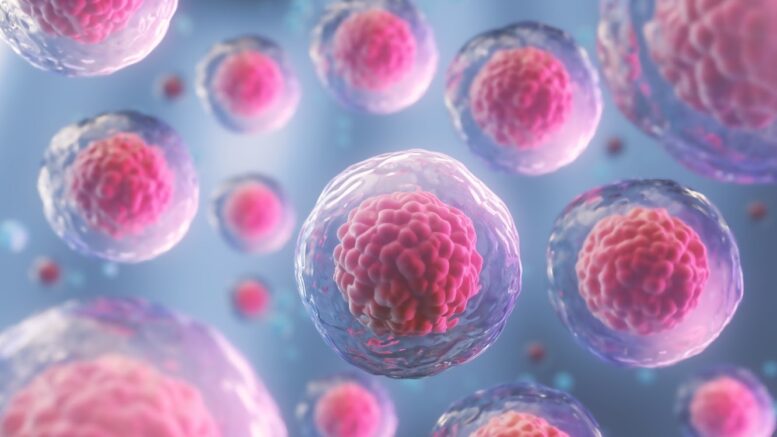The study of immune dysfunction in human beings and animals accelerated the development of new drugs and therapies in the 20th century. Generally, the entire science of human immunotoxicology arose in the 1970s as a response to the phenomena of reduced resistance to diseases in certain people and its concurrent absence in others. In examining the review of toxicity of certain human products, such as skin ointments, makeup and drugs, there is a need to move from animal testing to human testing without the need for actual test subjects, and this is where Peripheral Blood Mononuclear Cells come in.
What are Peripheral Blood Mononuclear Cells?
Blood cells with round nuclei, such as lymphocytes, monocytes, and macrophages, are collectively referred to as peripheral blood mononuclear cells (PBMCs). These leukocytes help the body’s immune system recognize and respond to outside invaders. Ficoll, a hydrophilic polysaccharide that separates blood layers, may be used to isolate PBMCs from whole blood, which can then be separated further via gradient centrifugation into plasma, PBMCs, polymorphonuclear cells (such as neutrophils and eosinophils), and erythrocytes. Red blood cell lysis is a step that may be used to further separate the polymorphonuclear cells. Research and toxicological usage of peripheral blood mononuclear cells is widespread.
These critically essential PBMCs are vulnerable to the effects of medications and toxins because they are exposed to them in the peripheral circulation. Thus, researchers examining the toxicity of novel medications or chemical compounds greatly benefit from access to PBMCs from peripheral blood.
PBMCs Versus Whole Blood
Numerous biological investigations have found peripheral blood mononuclear cells (PBMCs) and whole blood to be an invaluable resource for molecular analysis. Not many studies have compared PBMCs to whole blood, though. However, at a practical level, PBMCs offer more versatility since the source material is narrowed down based on whether it’s from lymphocytes, macrophages or monocytes.
However, when it comes to gene suppression, whole blood is preferred because using whole blood RNA stored in PAXgene tubes is a great way to get gene expression data with low variability and high sensitivity, indicating its potential use in multi-center investigations that need blood gene expression measurements. It’s possible that this is due to the fact that PBMC samples typically don’t include basophils, neutrophils, or eosinophils. Only a tiny percentage of immune cells are granulocytes e.g., basophils and eosinophils.
How Researchers Use Peripheral Blood Mononuclear Cells?
The availability of PBMCs is crucial for the study of human immune system and toxicology, so researchers can better evaluate novel therapeutic molecules. In addition to suppressing the immune system, drug toxicity that affects PBMCs can produce a wide range of other significant, even fatal, adverse effects. Predictive studies to establish the safest dose for novel therapeutic compounds also rely heavily on PBMCs.
To get to the molecular core of a certain hazardous reaction, researchers need both normal and disease-state PBMCs to compare. Drug development can move forward more quickly, effectively, and with less immunotoxicity if researchers know which pathways or molecules are affected.

Generally, PBMCs allow researchers to tweak their research on new drugs and on immune reactions to medications. PBMCs provide researchers with an effective tool to advance personalized medicine since these cells reveal individual reactions to chemicals and therapeutic agents better than any other method. Recent research has centered on understanding how differences in genes affect drug targets, metabolism, transport, and safety. To develop novel drugs that work well for certain genetic profiles while also being safe is the ultimate aim of such investigations.
Factors Affecting Reactivity of PBMCs
Since the composition of PBMCs depends on the donor and the donor’s physiological condition, factors such as infections, underlying conditions, nutritional status, inflammations and hormone levels are known to affect the responsiveness of immune cells. Different donors can lead to more inter-experimental variance compared to using cell lines. Reproducing results using cells from several donors strengthens the generality of most results, despite the fact that doing so increases variability due to the use of multiple donors.
Cost and Affordability of PBMCs
The standard measuring unit for PBMCs when purchasing from a biobank is in million cells per unit. The SER-PBMC-F is the cheapest cryopreserved PBMC and it normally goes for about $137 per vial with each vial containing 15million cells. Other PBMCs in the market are:
- Human Normal Peripheral Blood Mononuclear Cells (PBMCs), FRESH 15 million cells/vial, at $176 per vial.
- Human, TYPE 2 DIABETIC, Peripheral Blood Mononuclear Cells (PBMCs), Cryopreserved, 15 million cells/vial at $192 per vial.
- Isolation of Peripheral Blood Mononuclear Cells (PBMCs) at $135 per vial.
- Isolation of Leukapheresis PBMCs at $377 per vial.
- A cryovial of PBMCs at $150 per vial.
- Isolation of Myeloid and Lymphoid Cells from PBMCs or Bone Marrow at $180.
These prices are the average from several aggregated laboratories that offer such services in retail and large scale. The prices also vary based on several other factors that have a lot more to do with market forces than product variations.
What to Consider When Buying PBMCs
Researchers in the life sciences frequently have a need for rare or unusual types of human blood or cell products. It’s important to choose a PBMC vendor that can ship the variety of samples your business needs. Isolating leukopaks, whole blood, and cord blood from healthy and disease-state donors is among the several specimen types required of the provider.
Ensure the supplier’s mononuclear cells are HLA tested. Donors are tested in this way to see what kinds of human leukocyte antigen (HLA) genes and antigens are present. Each healthy-donor PBMC sample must be carefully inspected by the supplier to rule out the presence of any hepatitis or HIV. Following methods authorized by an institutional review board (IRB), suppliers harvest these cells from donors that came back negative for HBV, HCV, and HIV. Each purchase must also include a Certificate of Analysis verifying the donor’s demographics, phenotype, and cell specifications.
